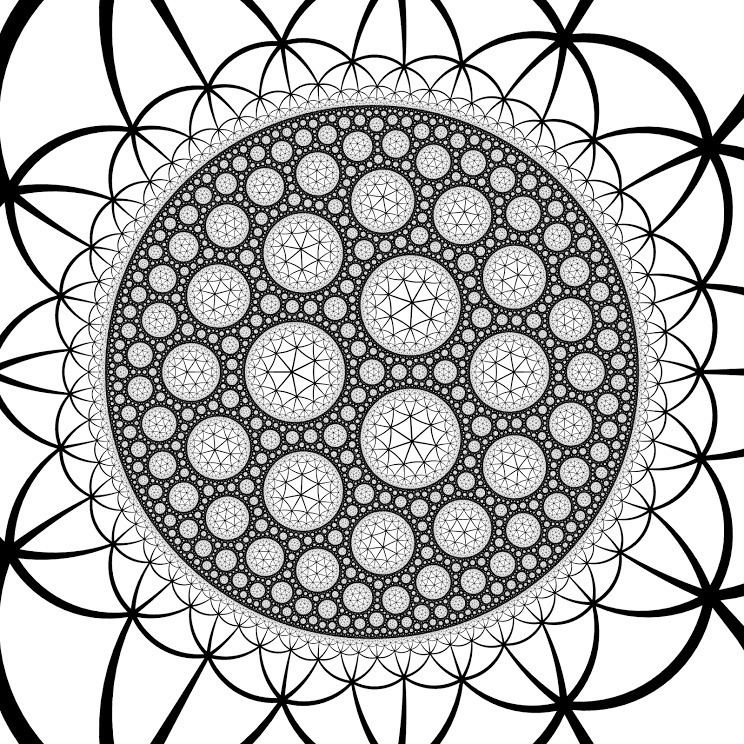 | ||
In the geometry of hyperbolic 3-space, the order-7 tetrahedral honeycomb is a regular space-filling tessellation (or honeycomb) with Schläfli symbol {3,3,7}. It has seven tetrahedra {3,3} around each edge. All vertices are ultra-ideal (existing beyond the ideal boundary) with infinitely many tetrahedra existing around each vertex in an order-7 triangular tiling vertex arrangement.
Contents
Related polytopes and honeycombs
It a part of a sequence of regular polychora and honeycombs with tetrahedral cells.
Order-8 tetrahedral honeycomb
In the geometry of hyperbolic 3-space, the order-8 tetrahedral honeycomb is a regular space-filling tessellation (or honeycomb) with Schläfli symbol {3,3,8}. It has eight tetrahedra {3,3} around each edge. All vertices are ultra-ideal (existing beyond the ideal boundary) with infinitely many tetrahedra existing around each vertex in an order-8 triangular tiling vertex arrangement.
Symmetry constructions
It has a second construction as a uniform honeycomb, Schläfli symbol {3,(3,4,3)}, Coxeter diagram, , with alternating types or colors of tetrahedral cells. In Coxeter notation the half symmetry is [3,3,8,1+] = [3,((3,4,3))].
Infinite-order tetrahedral honeycomb
In the geometry of hyperbolic 3-space, the infinite-order tetrahedral honeycomb is a regular space-filling tessellation (or honeycomb) with Schläfli symbol {3,3,∞}. It has infinitely many tetrahedra {3,3} around each edge. All vertices are ultra-ideal (existing beyond the ideal boundary) with infinitely many tetrahedra existing around each vertex in an infinite-order triangular tiling vertex arrangement.
Symmetry constructions
It has a second construction as a uniform honeycomb, Schläfli symbol {3,(3,∞,3)}, Coxeter diagram, = , with alternating types or colors of tetrahedral cells. In Coxeter notation the half symmetry is [3,3,∞,1+] = [3,((3,∞,3))].
